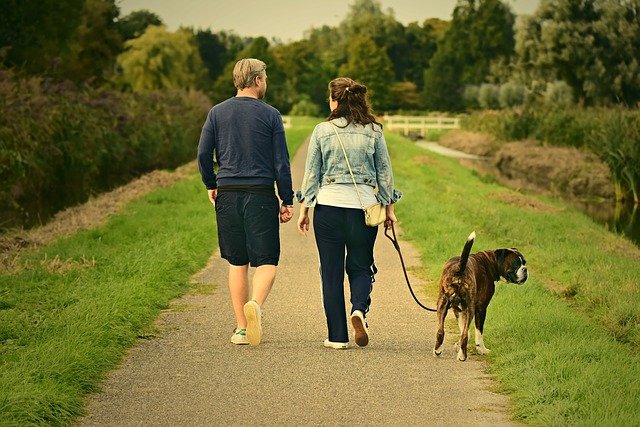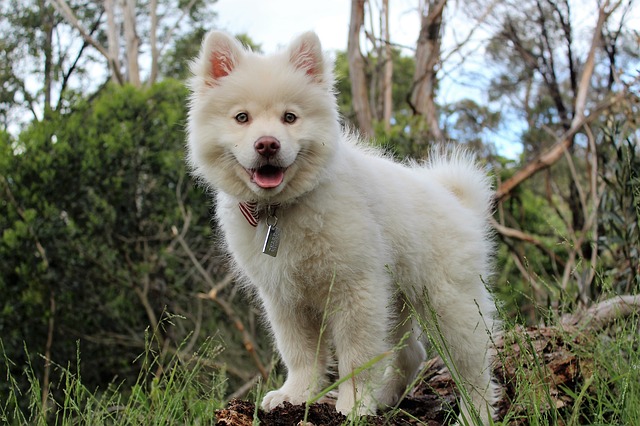Dogs are like kids that need our love and attention. Pets who have suffered from traumatic events may need extra support, love, and patience. This blog post has put together everything you need to know about dog trauma symptoms and what you can do to help a traumatized dog.
Let’s get started:
Dog Trauma Symptoms
Determining that your dog is traumatized can be a confusing and difficult process. The trauma symptoms in dogs may vary depending on the cause.

How To Find Out If Your Dog Is Traumatized
A dog can be traumatized for many reasons. It will take a lot of time and effort to help your dog get over its trauma.
Here are some symptoms we can look for that might indicate trauma in your dog.
1. Fear and anxiety
Just like humans, traumatized dogs can also develop fear and anxiety problems. They may show avoidance behaviors such as hiding or becoming still or repeatedly pawing at their owners.
2. Inability to sleep
Insomnia or inability to sleep in dogs typically stems from trauma. It is either a behavioral problem or a medical condition.
3. Outbursts of aggression
Dogs may attempt to flee situations where they are traumatized. They may become aggressive when they encounter the situation or if forced out of a hiding spot.
4. Hyper-vigilance
Some dogs become extremely sensitive to their surroundings. They try to stay alert to any hidden dangers.
5. Non-responsive to commands
The outward signs of a traumatized dog are that they will ignore your commands. They are unable to pay attention to your commands.
6. Decreased interest in a favorite activity
Your traumatized dog may refuse to play, even if you play their favorite game or give them their favorite toys.
7. Signs of pain and distress
Your traumatized dog may show signs of pain including whimpering, crying, shivering, or hiding.
The trauma signs in dogs may mimic other conditions, so it is important to have your dog evaluated by your vet when problems arise. By knowing the symptoms, you can take the proper measures to regulate your dog’s behavior.
- Dog traumatized after vet: Some dogs are really traumatized by the vet appointment. Usually, the first visit to the vet’s office is a traumatic experience.
- Dog traumatized after haircut: Grooming accidents can upset dogs. They sometimes do get embarrassed by a new haircut.
- Dogs are traumatized after getting lost: Many dogs get separated from their families every year. This may be the most traumatizing experience of a dog’s life.
Some common causes of traumatized behavior in dogs may include:
- Being abandoned to live as a stray dog
- Bad weather or thunder
- Natural disasters like hurricanes and tornadoes
- A serious car or household accident
- The loss of their caretaker
- Physical or emotional abuse
- Mistreatment at the hands of a past owner
- Bad interactions with people or other animals
How To Help A Traumatized Dog?
Trauma has a lifelong impact on many dogs. The good news is that there are many things that you can do to help your dog. Going through the recovery process together can make your bond even stronger. Here is what you can do to help a traumatized dog:
Create a sense of safety
Give your traumatized dog a clear structure of safety. These dogs have their mindset on constant alert. They should be given time to feel safe and secure.
Set up a comforting spot
Create a safe place, for example, a mat or safe zone, without being forced to interact for predictable portions of the day. It is the place where treats, relaxation, and massage take place, and make sure to keep it that way. Don’t let anything bad happen to your dog in that place.
Give the dog some control and choices
Give some opportunities to your traumatized dog to make choices about its environment, schedule, and care. The use of force must be avoided whenever possible.
Set your dog up to make good choices, then reward those choices to build the dog’s confidence. Let your furry pal keep some autonomy and give them space to decompress.
Try play therapy
Many experts suggest playing therapy as a great technique to make dogs feel thoroughly comfortable after trauma. Exercise and play sessions should be vigorous but relaxing and enjoyable.
A walk around the neighborhood is a good start for your dog. Here are some things you can do together to calm down your dog in safe ways:
- Going for long walks
- Going for jogging
- Playing tug of war
- Fetch games
- Swimming
- Agility exercise

Once you’ve burned that extra energy away, your dog should be exhausted but pleasantly relaxed.
Establish a positive reinforcement protocol
Rewards like treats, playtime, and chew toys are the motivators for your traumatized dog. You can reward your fur buddy for showing some calmness and settling down. Remember that harsh behavior is not the answer. Never punish your dog for undesirable behavior.
Give time and show patience
You need to be consistently firm and patient with your furry pal. Recovering from trauma and behavioral modification of your dog takes time and effort. Give your furry friend several days to settle in before getting back to normal social life. Gradually and slowly expose them to new people, sights, and places.
Take your time and lower your expectations. Allow your traumatized dog to move at its own pace and take things moment by moment. With patience and consistency, the outcome will be worth it and rewards will come back to you in spades!
Hire a professional
If you are a new pet parent, seek help from a qualified veterinarian. If you continue to have problems, consider hiring a professional dog behaviorist to help. They can be a great resource because of their experience and knowledge about behavior modification. A professional dog behaviorist will help you to figure out the best ways to heal your dog and let it live a happy and healthy life.
Reiki For Dogs With Trauma Symptoms
Reiki is an ancient Japanese healing practice that is beneficial for healing a traumatized dog. It is an energy that helps keep things balanced.
Reiki works on dogs by balancing and unblocking the dog’s own energy centers and pathways. This in turn supports the dog body’s ability to heal itself. Reiki involves the channeling of natural healing energy from its divine source into a subject.
Reiki is a supportive system that aids the body’s natural healing process. Reiki has multiple benefits for dogs. It helps to reduce pain, relieve anxiety, or alleviate fears while giving your dog a sense of relaxation. Reiki can help:
- Ease aches, pains, strains, and allergies
- Boost the immune system, increase energy levels, and enhance overall well-being
- Decrease healing time after surgery, injury, trauma, or illness
- Remove emotional or psychological blocks that are deterring physical health
- Addresses problems with the coat and skin
- Reduce stress, anxiety, nervousness, and promote relaxation
- Supplements other medical treatments
- Strengthen the bond between you and your dog

Living With A Traumatized Dog
The road to making your dog feel thoroughly comfortable after trauma can be a long one. Emotional traumas are often harder to treat than physical ones. You can make this journey successful by giving your dog love and showing patience. However, showering your traumatized dog with love is not sufficient.
There are few considerations to keep in mind while living with a traumatized dog.
- Understand your dog’s triggers
A traumatized dog is more likely to become re-traumatized if it re-encounters any key stressor. So, you need to understand your dog’s triggers in order to prevent future trauma episodes.
- Adopt a strict routine
Dogs need to realize the world is an ordered place. Having a regular routine helps with rebuilding confidence in dogs. Knowing exactly what to expect eliminates the fear of the unknown.
- Practice Desensitization
The exposure to a trigger should be carefully planned. Otherwise, it will make things much worse. The dog will get over the triggers with planned exposures.
- Avoid ultra-protected lifestyle
Don’t make your pet over-sensitive by making them live an ultra-protected life. Just be careful to avoid major triggers and foreseeable stresses.
- Check your own energy
Watch your own behavior and emotions around your traumatized dog. Any energy you project, your dog will reflect back. Try to stay in a calm assertive state of mind and project yourself as a confident pack leader.
- Never scare your dog
Never use any techniques that can give your dog a shock or frighten them. This will damage the bond between you and your dog or make your pet aggressive.
Final Thoughts About Dog Trauma Symptoms
Dogs and humans get along well because both are social species and crave companionship. You should provide your traumatized dog social support, a sense of belonging, security, and being loved.
Remember, when you bring home a four-legged member, you are committing to a long-term relationship. Dogs bring an incredible amount of joy to our lives. Try to never give up on providing your dog with the best quality of life possible.
Hope you enjoyed reading this article! Did you find it helpful? Feel free to share your thoughts with us.

My dog is a rescue dog and needs a lot of petting
I just recently rescued/adopted an abused 2-year-old dog that lived in a crate her entire life, she eats fairly well, sleeps but I cannot come near her, she is scared, no aggression. I have set up an area in my large bathroom, her crate and food etc, she doesn’t go in her crate anymore but she still is scared of me, it’s been 2 weeks. I cannot take her on walks nor cuddle her, anything, HELP! A dog behaviorist is a fortune, does anyone know of anything I can do? She uses the pee pads but has diarrhea, I’m giving her plain chicken or turkey with white rice, hasn’t helped so far.
I have a dog bed that she sleeps on but mostly she hides under chairs, poor thing!
Maybe a little bit of cheese?
I’ve taken on a rescue who was originally feral. Then abused for two years. She’s terrified of everything. A lot of dogs are allergic to anything with feathers. Mine is allergic to chicken. Poor baby, her nerves are probably giving her diarrhea and you are right. Pysch s for dogs are outrageous!
Maybe the small confines are freaking her out? Especially with the cage being there? (Constant reminder)
I’ve just came across your posting. I know it’s been a while since you posted this. How is your dog doing?
I have adopted a traumatized dog also. She is 2 1/2 yrs old.
It’s been 5 months and she improved 10%. That is huge!
We think by providing a good home now, showing love and affection, feeding them, giving them toys etc that they change faster. But they need a lot of time.
Take it day by day. Every small improvement is huge! Give her time, love and structure. She will come around eventually. It may take months, a year or even longer. We don’t know what they’ve been through.
I hope all is well with you and your fur baby.
I give my dogs canned pumpkin when they are either having diarrhea or constipation. in fact I put some in their food daily. I have 3 rescues 1 of which was abused when she was a puppy (bate dog). when I found her she came out from under a house and followed me home, and I let her. Each one has a tragic story
God bless you and your rescues.🐶💞
I have a 1.5 year old Cane Corso that was abused. What I have done is attached her to a hands free lead and she is by my side 24/7. I do not give her too much attention when she is in fear as that will only reinforce the fear even more. However, I do try to just be calm and a good leader for her, I take her on walks and we go play in a large dog run on the property where I live. She has come a long way and its been about 1.5 weeks so far. However, a lot of people who mean well end up with traumatized dogs that stay that way for years. Kudos to you for reaching out and asking for help